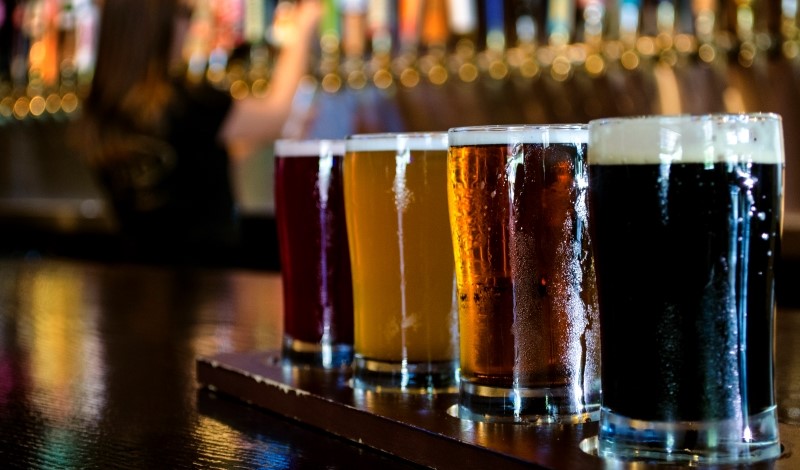
A conflict between historic alcohol regulations and new constitutional doctrines threatens small breweries.
Americans love beer. In 2021, they drank nearly 6.4 million gallons of it.
Over the last forty years, craft breweries have grown to serve a substantial portion of this demand, with more than 8,000 of these breweries serving local and regional markets. Relatively recent changes in state and federal law enabled the emergence of the craft beer industry.
But some experts argue that small brewers are now caught in a perilous position between historic alcohol regulations and changing constitutional doctrine.
Beginning in the early nineteenth century, “teetotalers”—individuals who abstained from drinking alcohol—campaigned to prohibit alcohol consumption in the United States. They were particularly concerned with the social effects of “tied houses”—retailers that agreed to sell only one producer’s beverages in exchange for low prices. In some cases, one producer could dominate entire towns through tied houses.
The teetotalers scored a major victory with the ratification of the 18th Amendment to the U.S. Constitution, which banned the production, sale, and transportation of alcohol in the United States. But their win did not last. Drinkers who were denied legal options instead turned to illegal sources such as bootleggers for refreshment.
So, just fourteen years later, the U.S. Congress conceded defeat to the growing U.S. bootlegging industry and enacted the 21st Amendment. The Amendment gave states total control over the production, transportation, and sale of alcohol in the hope that states would be more successful in eliminating alcohol consumption through regulation.
Contrary to their intended result, however, every state had legalized the sale of alcohol by 1966.
Each state eventually adopted the three-tiered system that is still in effect today, under which alcohol businesses may produce, distribute, or sell to consumers, but cannot do more than one. Proponents justify this scheme by claiming that it encourages record keeping, discourages collusion and market consolidation, and slows alcohol consumption.
In 1979, the U.S. Congress further relaxed restrictions on alcohol by legalizing home beer production. The move ignited a wave of hobby brewing and prompted states to begin legalizing commercial brewpubs. By 2020, more than 8,000 small, independent breweries collectively controlled 24 percent of the U.S. beer market.
But now, some experts claim that the craft beer industry is in danger.
These experts argue that the three-tiered system does not prevent market consolidation, but rather encourages it. The U.S. Department of the Treasury has similarly expressed concerns about consolidation in the beer market.
For example, just two producers—Anheuser-Busch and MillerCoors—control nearly two-thirds of the market. And after a series of recent acquisitions, Anheuser-Busch has become the second-largest craft beer producer in the United States. Beer distributors have also consolidated in the last 20 years.
Evidence even suggests that large national producers and distributors may be working together to suppress small producers.
For example, some large producers grant large distributors exclusive rights to their products in exchange for favorable treatment. Because most states require producers to sell their products through distributors, such agreements can greatly disadvantage small producers. Relatedly, some evidence suggests that tied houses have returned, with large producers using market domination to shut competitors out of major venues, such as stadiums.
Major producers and their wholesale partners have also lobbied state and federal lawmakers for policies that protect large producers and distributors at the expense of small competitors. Political donations by the National Beer Wholesalers’ Association—which represents the interests of beer distributors—noticeably increased after the expansion of the craft beer market in the early 2000s. Since 2012, the Association has been the second largest donor in the industry every regular election.
Regulatory constraints are not the only threat to small brewers. Recent changes in constitutional law may also imperil them.
Soon after ratification of the 21st Amendment, alcohol producers challenged state regulations by claiming that they violated the Commerce Clause of the U.S. Constitution, which gives Congress the exclusive power to regulate trade between the states.
The U.S. Supreme Court initially found these arguments unconvincing based on what the Court considered clear language in the 21st Amendment granting states the power to regulate alcohol.
The Court, however, eventually used the Commerce Clause to roll back states’ power to privilege in-state alcohol businesses. In 2019, the Court held that states cannot place requirements on out-of-state distributors that they do not also place on local distributors.
Federal courts disagree on whether this rule also applies to alcohol producers and retailers, suggesting that the Supreme Court may soon take up the issue. Some experts argue that these decisions could allow large producers and wholesalers to continue consolidating, controlling the beer market, and disadvantaging small producers.
Large producers may also challenge state alcohol regulations under the First Amendment, which prevents the government from unduly limiting private parties’ rights of speech and association.
In most states, producers are prohibited from paying retailers for advertising space within their stores. Proponents of these regulations claim that such advertising fees are essentially bribes that allow large producers to pressure retailers to exclude their market rivals.
But as Daniel J. Croxall of the University of the Pacific Law School points out, under the Supreme Court’s recent commercial speech cases, the First Amendment requires any restrictions on commercial speech to be necessary to accomplishing a compelling government priority. Croxall claims that if the Court were to take up a challenge to these laws, it would likely rule in favor of the large producers, which would then have yet another means of pushing small breweries out of the market.
Some scholars point out that non-industry factors—such as the COVID-19 pandemic and shifting consumer tastes—explain recent decreases in sales among small craft breweries. Yet another scholar argues that evidence shows craft beer is thriving in the United States and that concerns over large beer companies’ market power are overblown.
As scholars and beer advocates continue to debate the relationship between large beer companies and small brewers, constitutional and regulatory frameworks will continue to evolve. The consequences for craft beer are far from certain.



